Monday, December 23. 2013
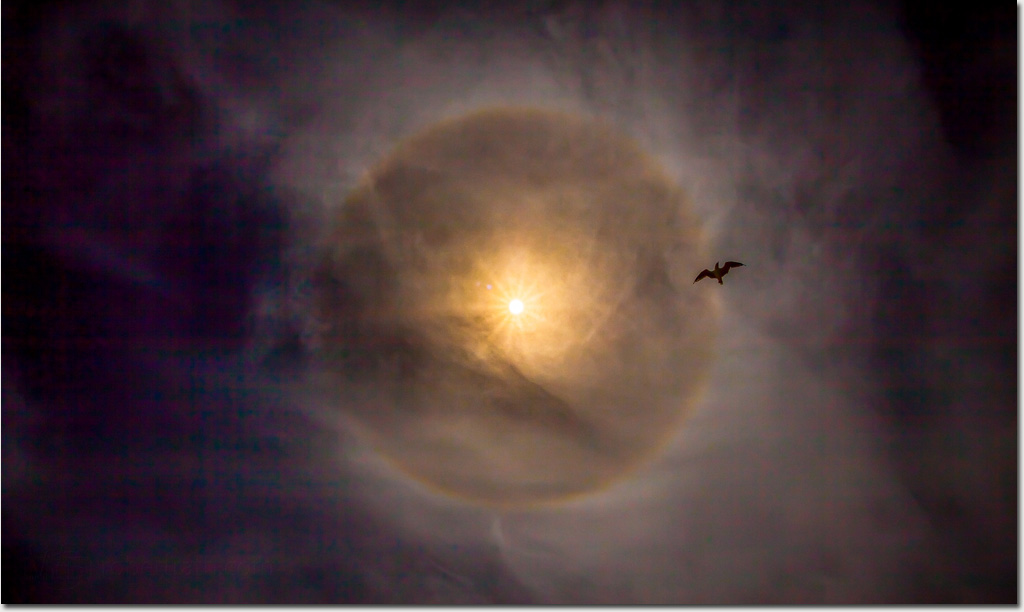
Just another sunny day at the beach with friends, family, blue skies and a little cloud cover.
I really was not expecting to capture anything more dramatic than some holiday antics.
Then I looked up into the sun and saw circles within circles.
Photo: Robert Rath, ‘Day 723, Encircle' 1/8000s f/22 ISO50 17mm
Sunday, December 22. 2013

Spending Christmas with my mum and our greater family would never be complete without the family Christmas tree.
Years ago, each Christmas, my dad would take us out into the local pine scrub-lands to find the perfect tree. I can remember all the arguments about which tree looked the nicest, would be the right size to get close to but not touch our 12' ceilings. I suspect most of our suggestions were ignored. Dad always seemed to get it right though and we always had the perfect tree to decorate, to look at and to look after over Christmas.
Back then we had old and fragile ornaments made of glass which were carefully unwrapped after being put away from the previous year. All over the tree we placed little candles in holders placed as far out on the branches as their weight could bare and on Christmas eve we lit them all bringing the Christmas tree to life with the twinkle of candle light.
For many years now the family Christmas tree has been made of metal and plastic. The candles are long gone, replaced at first with little bulbs and more recently light emitting diodes and fancy light patterns.
The decorations now are an eclectic mix of old and new. Dad's gone now but I'm sure he'd still admire this modern day creation.
This year I noticed someone new. I had never noticed Frosty the Snowman before, welcome to our family Christmas tree!
Photo: Robert Rath, ‘Day 722, Frosty the Snowman' 1.3s f/2.8 ISO100 100mm
Saturday, December 21. 2013
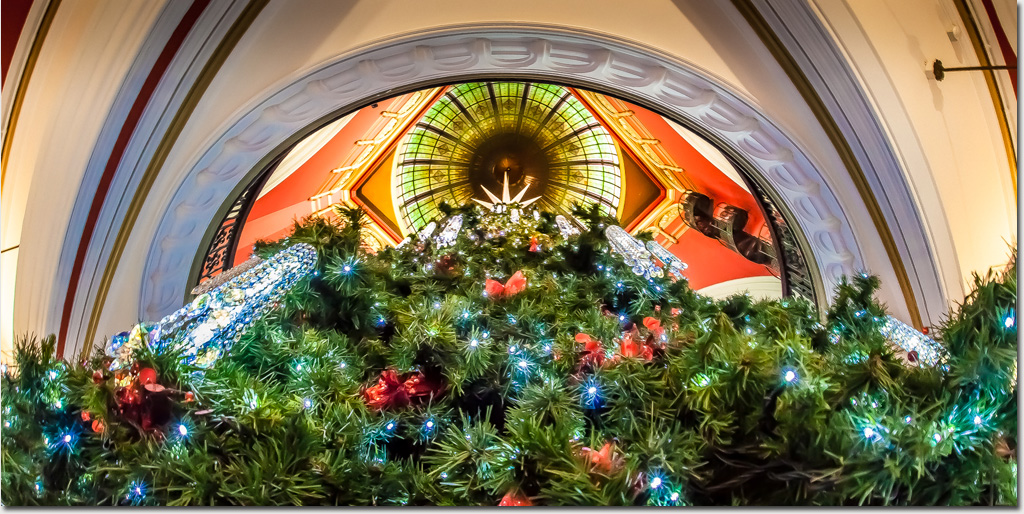
I found it impossible to capture this image of the Swarovski Christmas tree in the Queen Victoria Building as it works its way up from ground level through the atrium void to the ceiling above.
At ground level it completely fills the void with only it's crystal trunk and understory visible. At the top it simply looks like another festive tree, albeit covered in Swarovski crystal.
Here on the second floor you get to feel the scale of this 'sehr schöne Weihnachtsbaum' rising to its crown and the ornate glass dome above.
Photo: Robert Rath, ‘Day 721, Swarovski Tannenbaum' 5s f/7.1 ISO1000 15mm
Friday, December 20. 2013

I don't normally make a habit of leaving my camera on the ground and walking away from it in the early hours of the morning but looking up I decided on making an exception.
Photo: Robert Rath, ‘Day 720, Looking Up' 5s f/7.1 ISO1000 15mm
Thursday, December 19. 2013
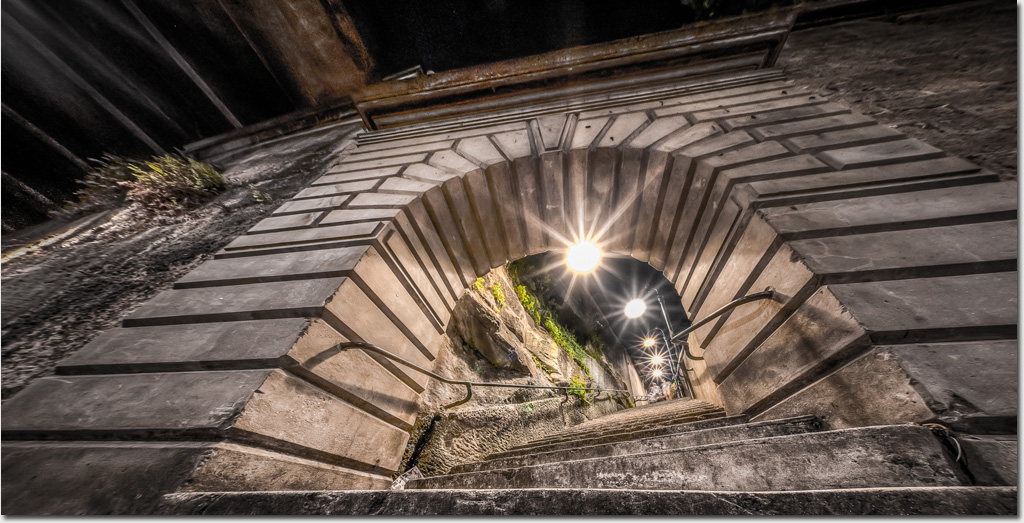
When I came upon this stone entrance leading up to 'The Rocks' area of Sydney it felt like and anxious invitation to climb.
Then I noticed people at the top descending back down here again after their own good time and could not help laugh at the symbolism.
Photo: Robert Rath, ‘Day 719, Descending From Heaven' 0.6s f/14 ISO640 15mm
Wednesday, December 18. 2013
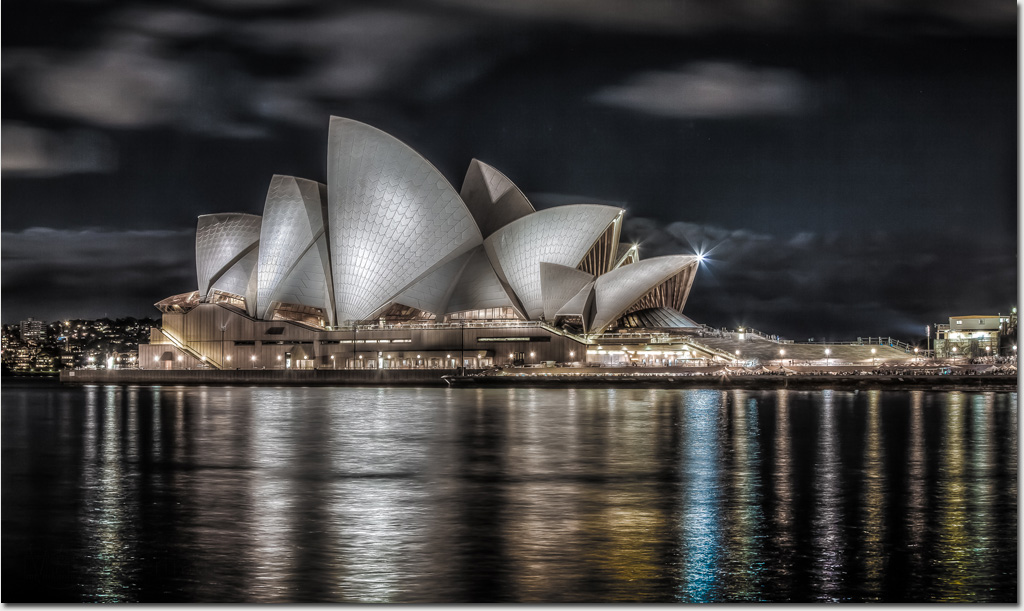
The Sydney Opera House, icon of Sydney along side it's famous bridge is probably the most photographed object in Australia.
I thought long and hard about doing yet another 'Sydney Opera House'. In the end I could not help myself.
Photo: Robert Rath, ‘Day 718, Operatic' 10s f/7.1 ISO100 70mm
Tuesday, December 17. 2013
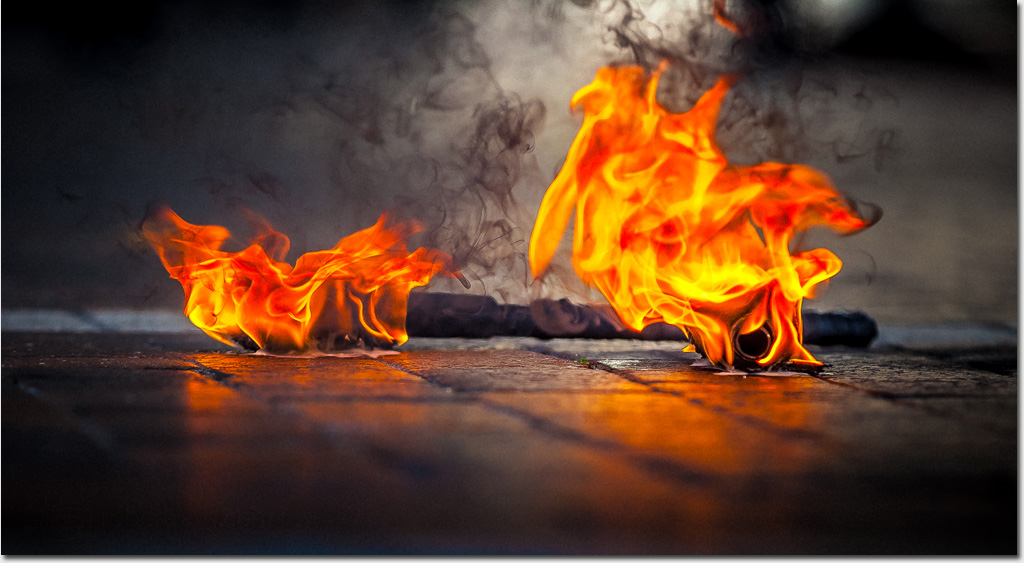
Fire juggler's batons lay on the ground burning bright yellow and orange, the black sooty smoke forming tight curls before being ripped away in the breeze.
These batons will not be passed to any one else just yet.
Photo: Robert Rath, ‘Day 717, Burning Batons' 1/500s f/3.2 ISO160 200mm
Monday, December 16. 2013
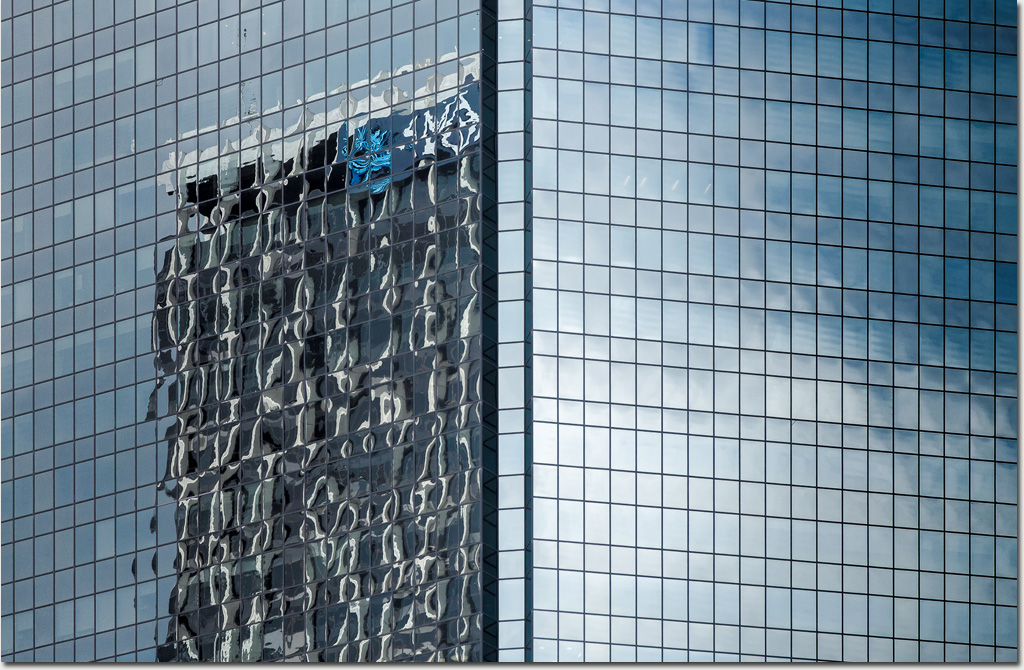
I love tall buildings covered in glass.
The mirrored surfaces of ordinary office windows bring to life the surrounding city scape in crazy and interesting ways. Sometimes the reelections are so complex it is hard to make out anything sensible.
This time I saw something very simple. One lone building in a blue sky full of clouds.
Photo: Robert Rath, ‘Day 716, Reflection' 1/1000s f/7.1 ISO320 200mm
Sunday, December 15. 2013
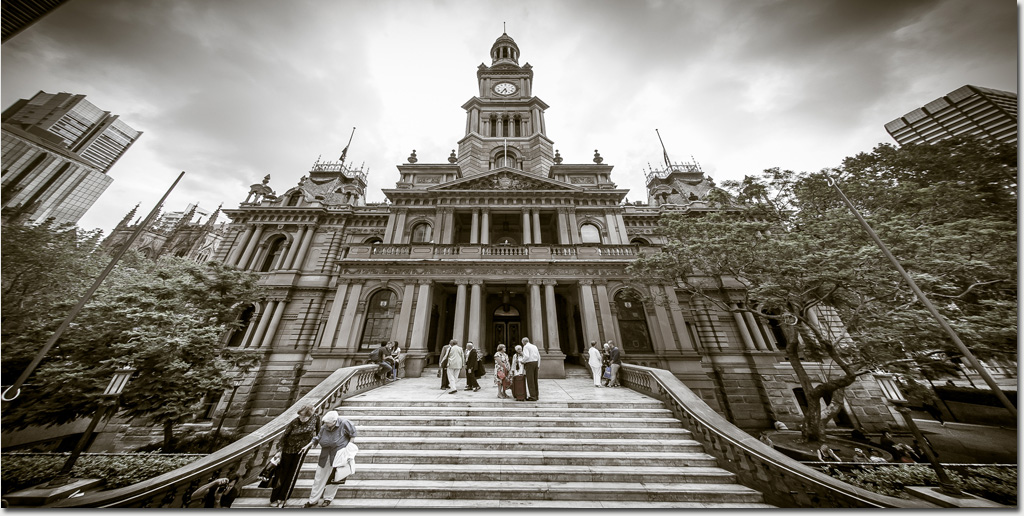
I'd seen the words 'Town Hall' many times on Sydney train timetables.
I'd seen the words 'Town Hall' many times on the train station siding.
I'd even gotten off at the 'Town Hall' station a few times but had never actually seen 'Town Hall'.
Well now I have...
Photo: Robert Rath, ‘Day 715, Capturing Town Hall' 1/250s f/10 ISO640 15mm
Saturday, December 14. 2013
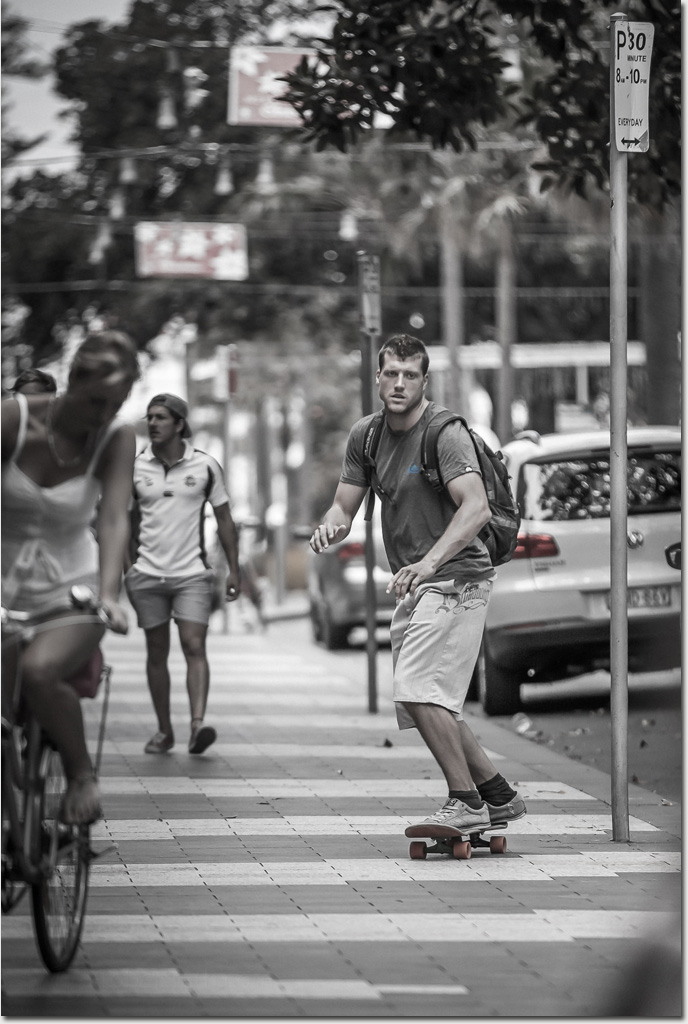
Why go on a photo-walk at all when you can kick back at a street side cafe and let it all come to skating down to me!
Photo: Robert Rath, ‘Day 714, Skater Inbound' 1/3200s f/2.8 ISO320 190mm
Friday, December 13. 2013

I am sucker for awesome city skylines and Sydney has them in abundance.
Here's just one take devoid of the usual Sydney icons but in every way, Sydney
Photo: Robert Rath, ‘Day 713, Circular Quay' 8s f/8 ISO320 15mm
Thursday, December 12. 2013
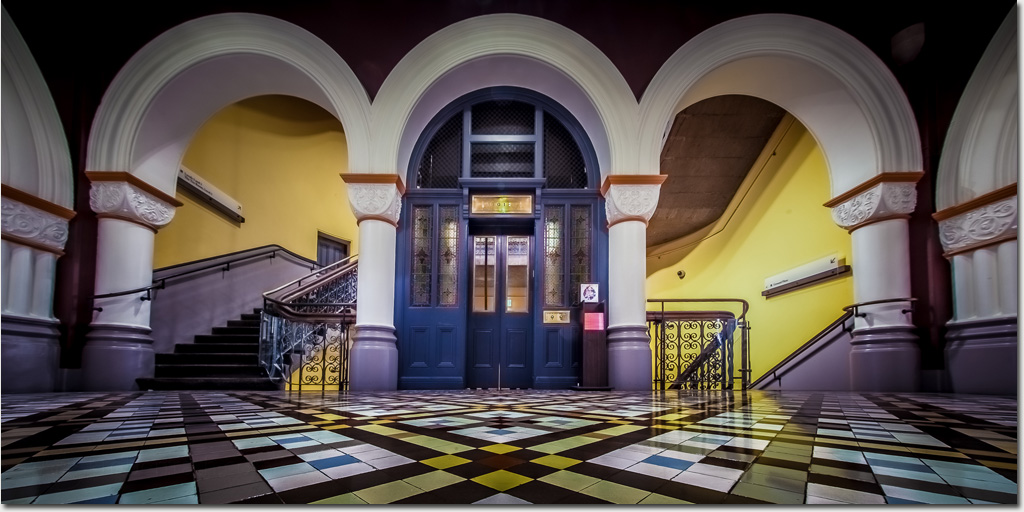
I had to look twice then look again. I thought I had found 'The Tardis' masquerading as a lift.
When I stepped inside I was however transported to another world, ... George Street!
Photo: Robert Rath, ‘Day 712, Tardis Blues' 5s f/14 ISO200 15mm
Wednesday, December 11. 2013
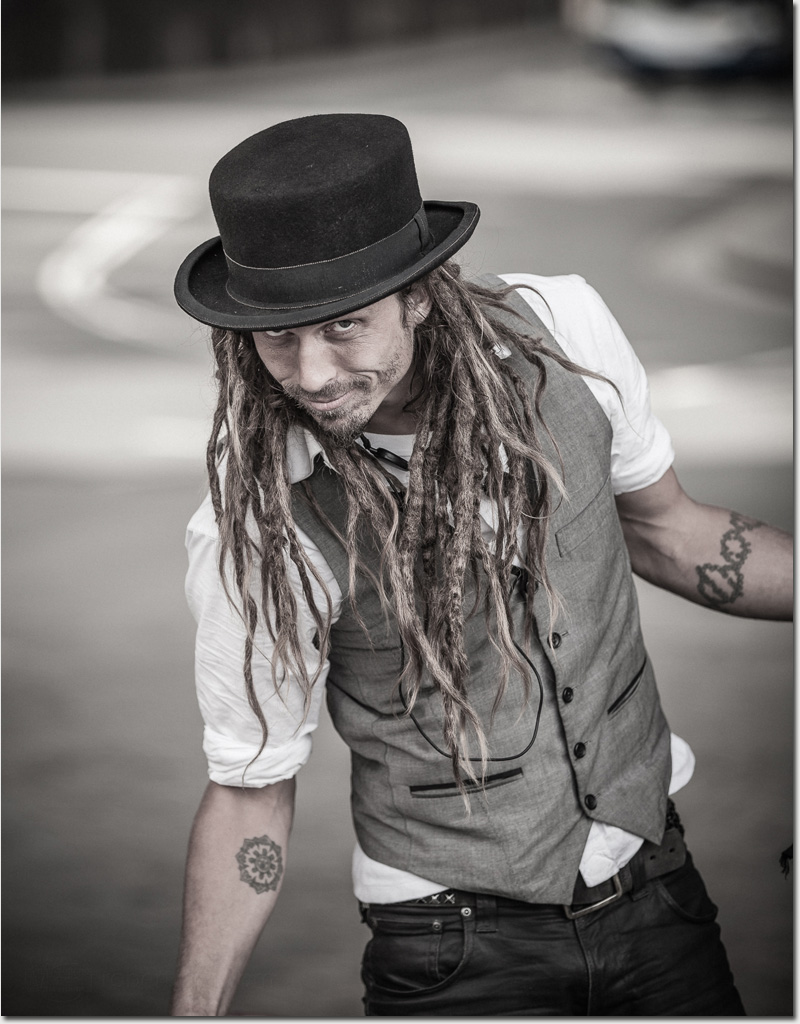
I watched discretely for a few moments as this Sydney street performer performed his own personal ritual as he made his immediate surrounds, now vacated by peers and spectators, his own space as he prepared his show.
The expressions he wore during this private time were varied but when he looked up and spied my lens that smile was quickly painted.
Photo: Robert Rath, ‘Day 711, Painted Smile' 1/500s f/3.2 ISO160 142mm
Tuesday, December 10. 2013

The QVB building on George Street is a place I have wanted to capture images of since the first time I wandered through it many years ago. For some reason it has taken me all this time.
Finally I made it a priority even if a little late in the day to capture the bustle of Christmas shoppers.
Looking down from the above you can see all four floors through three horseshoe shaped voids to the street level below. Perhaps luck comes in threes as well.
Photo: Robert Rath, ‘Day 710, Lucky Floors' 1/30s f/10 ISO3200 15mm
Monday, December 9. 2013

A photo walk in and around Seaforth led me inexorably down to the waterline.
Here on Fisher Bay Walk I was treated to one of the many Sydney suburban waterfront views with yachts, powerboats, recreational fishers and multimillion dollar residences with views to dream about.
I really do like the fusion of natural terrain, waterfront and residential development but rather than capture yet another cli·chéd Sydney image I went for the lapping water at my feet with just a splash of Sydney in the background.
Photo: Robert Rath, ‘Day 709, A Splash of Colour' 0.4s f/11 ISO320 15mm
Sunday, December 8. 2013
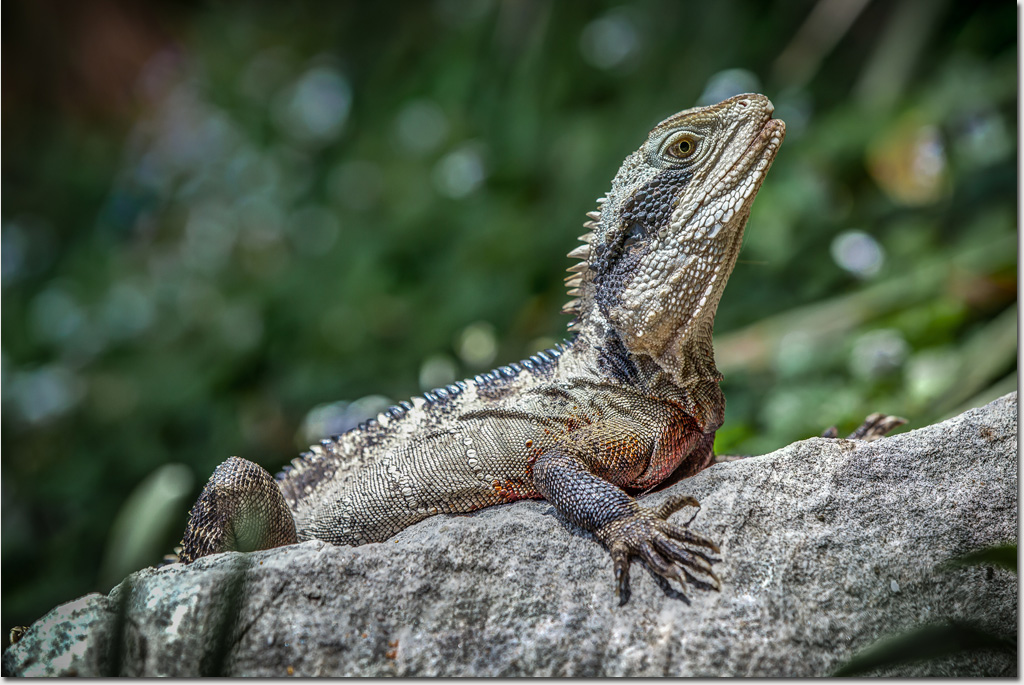
While meandering along Marine Parade just south of Manly Beach I noticed a small group of people with iPhones up in the air and aimed into the bushes.
I watched for a while from a distance until the subject of their enthusiasm, an Eastern Water Dragon ( Intellagama leseuerii), became obvious. One delighted English tourist remarked, "we never get to see anything like this at home".
Fortunately for all of us the beautiful creature sat patiently on it's rock in the sunshine until we had all satisfied our curiosity.
Photo: Robert Rath, ‘Day 708, Eastern Water Dragon' 1/800s f/5.6 ISO320 200mm
Saturday, December 7. 2013

Waiting for trains is not something that has to be a drag, especially when armed with a camera.
Recent Sydney arrivals await the the next train to Sydney.
Photo: Robert Rath, ‘Day 707, Train Transit' 2s f/10 ISO640 15mm
Friday, December 6. 2013
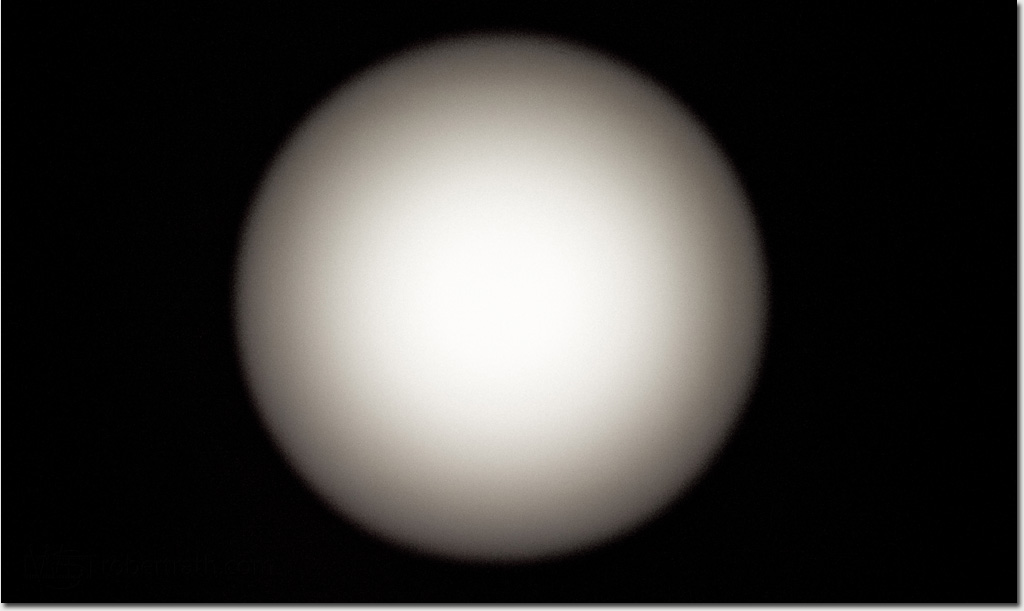
Perhaps this play on the word 'atonement' is not so obvious but I chose it for two reasons, the spiritual beauty of the circle and the seeking of a perfect balance of tone across its hemisphere.
Ordinarily this lamp would do nothing more than light the space it occupies and hardly even be noticed unless it failed to do its evening work. For me this bright disc of light above us drew my attention long enough for me to become aware of the tonal changes over its surface revealing the fact it is indeed a sphere and not just a simple bright circle.
I purposely kept the natural image noise of a high ISO, applied no sharpening and only played with the tones to render this disc back into a sphere.
Photo: Robert Rath, ‘Day 706, Atonement' 1/1000 f/2.8 ISO2500 200mm
Thursday, December 5. 2013
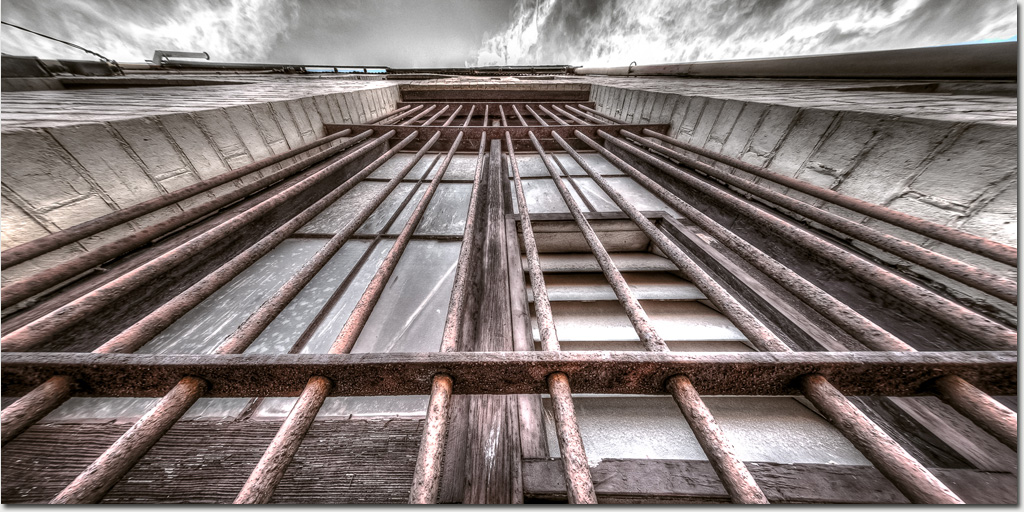
I wonder if these bars on an old Port Adelaide building were meant to keep people out or to keep something else in.
Perhaps neither. The owner may just have liked iron bars.
Photo: Robert Rath, ‘Day 705, Iron Bars' 0.3s f/16 ISO100 15mm
Wednesday, December 4. 2013
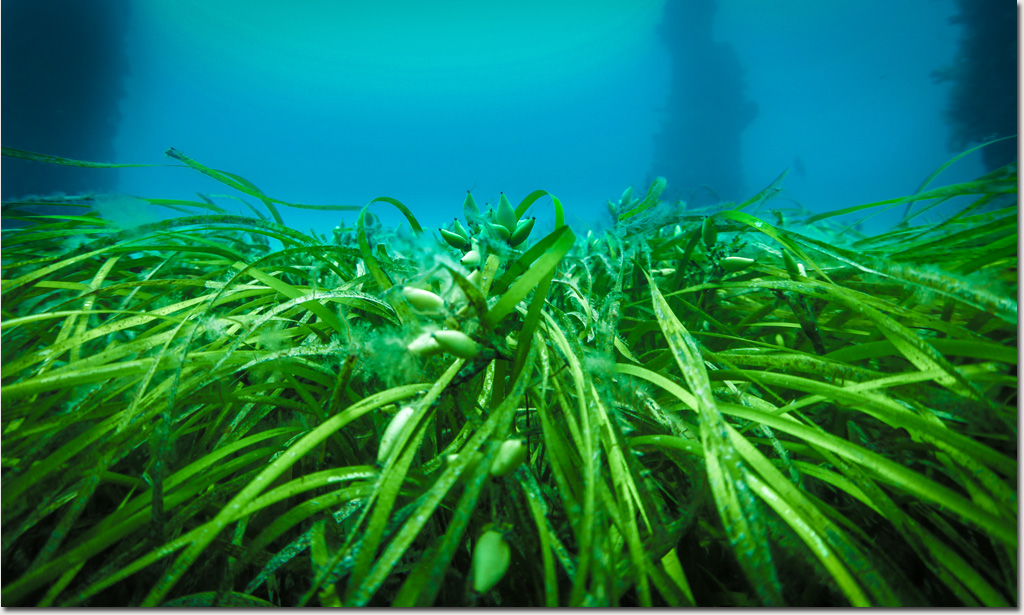
The expression 'fruit of the sea' is usually a term used for the animals of the ocean such fishes, crustaceans and molluscs. There are in fact 'real' fruits of the ocean and the sea grass meadows of the coastal shallows are one place you can find them.
The predominant seagrass of the Rapid Bay area is Posidonia sinuosa, and now with the warming water they are beginning to fruit.
The fruit of Posidonia sinuosa is actually quite pleasant to eat although I have never eaten enough of them to comment on their toxicity. Once you peel back the outer green husk there is a firmer green nut-like body inside which is not at all salty as might be expected and tastes something like a cross between a pumpkin seed and a pine nut.
Fruit from Posidonia sinuos might not be the beginning of a new food industry but seagrass meadows play an incredibly important role in providing our 'fruit of the sea' as a nursery habitat for many important commercial fish species.
Photo: Robert Rath, ‘Day 704, Fruit of the Sea', 1/100 f/5.0 ISO100 15mm
Tuesday, December 3. 2013
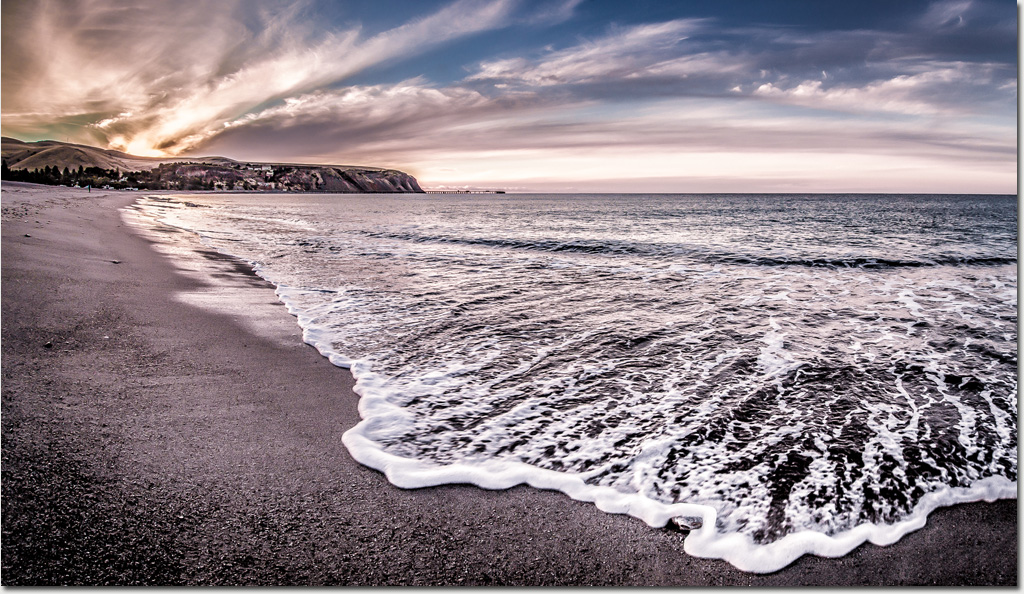
The greater Adelaide area has been blessed with amazing sunsets these last few days which has got me to thinking about how they happen.
When there are local high clouds and hundreds of kilometers of clear dry air off into the direction of the sunset magic happens.
The light from the sun, now well below the horizon, is bent around the curvature of the earth. The long path through the atmosphere filters out the colours from violet through to yellow lighting up the local clouds with vivid reds and oranges.
This image is actually before sunset with the sun disappearing behind Rapid Head. The light show is juts beginning.
Unfortunately our gorgeous sunsets do not last very long due to the angle of the sun in the sky . Now nearing our summer solstice we can expect the really vivid colours to last no more than about 5 minutes (compared to about 10 minutes in winter) as the sun races of into the west.
The title of this image comes from the poem 'Do Not Go Gentle Into That Good Night' by Dylan Thomas; "... Rage, rage against the dying of the light".
Photo: Robert Rath, ‘Day 703, The Dying of the Light', 1/320 f/8 ISO100 15mm
Monday, December 2. 2013
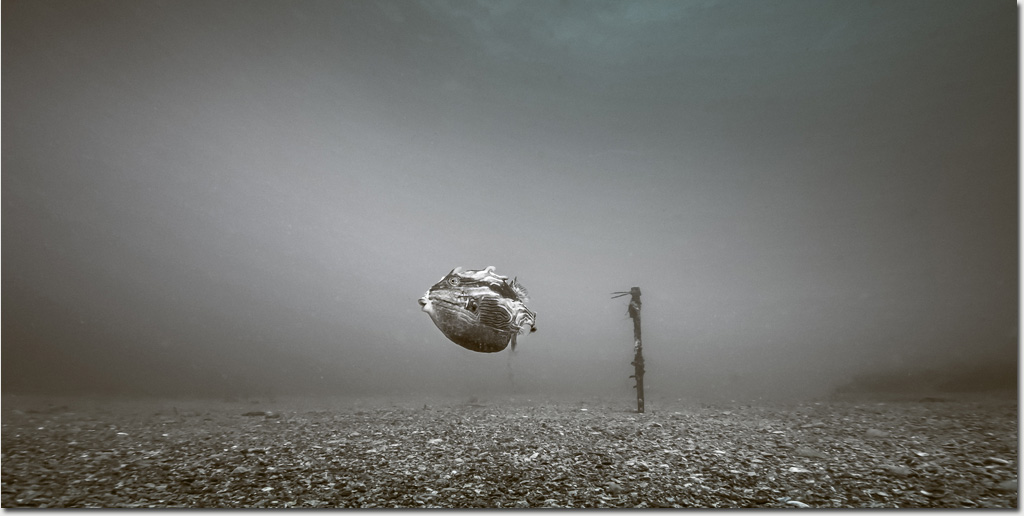
There is something post apocalyptic about his image. The dead rubble, the grey gloom, the line of steel posts running off into nothing and a lone cowfish missing most of her tail.
This poor girl is a female 'Shaw's Cowfish', Arcana aurita, and when I cam across her she was tucked in behind the steel post swimming into the current.
I can only speculate the reason for her battered body. I'd like to imagine some heroic escape from a large predator but probably she was harassed by triggerfish who sneak up from behind and take out little chunks of flesh.
Regardless I see here here as a lonely survivor in a bleak landscape.
Photo: Robert Rath, ‘Day 702, Lonely Survivor', 1/320 f/8 ISO100 15mm
Sunday, December 1. 2013
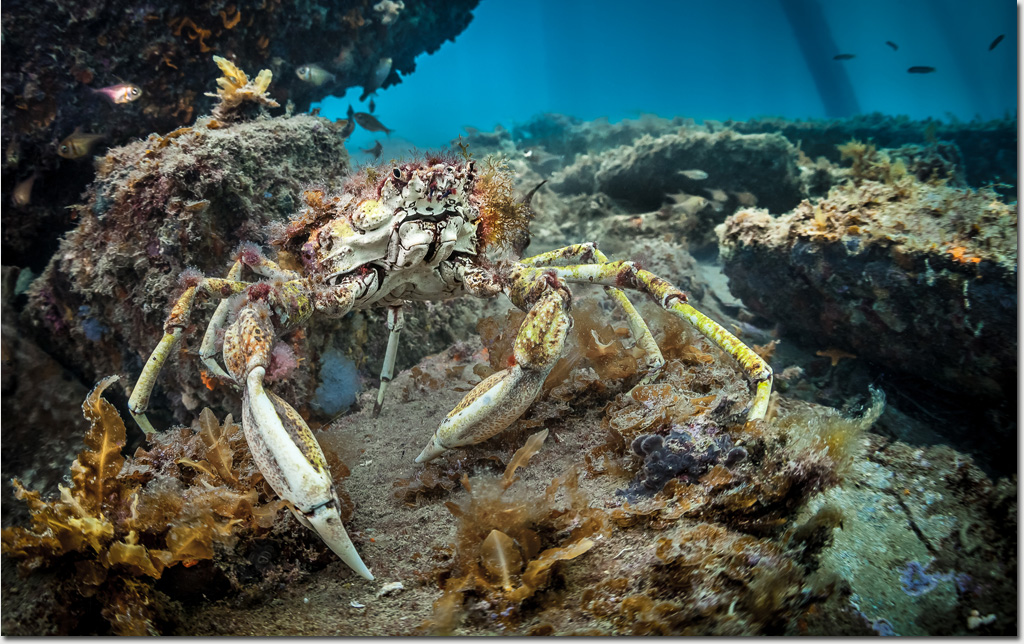
Visibility at Rapid Bay has dropped off a little following that dread northerly wind and corresponding bottom surge.
The wide angle lens may not be able to capture the larger environment very well but does a fin job in its other role of close focus wide angle.
This majid spider crab, Leptomithrax gaimadii, seems happy enough to pose for this style of portrait regardless of the fact that the dome of my housing is just inches away from him.
Photo: Robert Rath, 'Day 701, Just Hanging' 1/30s f/7.1 ISO320 15mm
Saturday, November 30. 2013
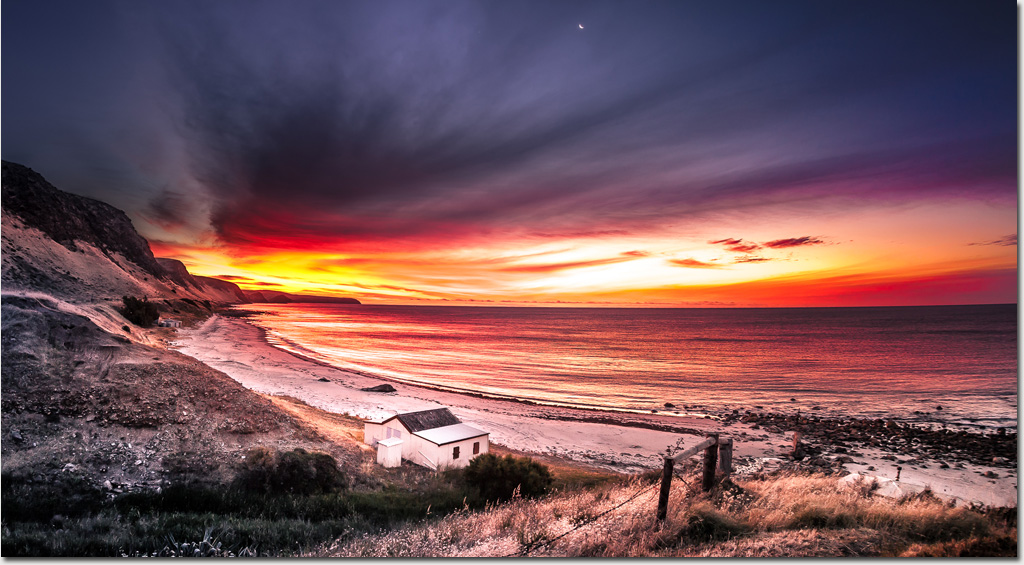
I remember the first time I laid eyes on this scene 25 years ago as vividly as if it were yesterday.
This sweeping stretch coastline from Normanville to where the road heads inland and down on to Cape Jervis overlooks Lady Bay out to sea and Rapid Head out to the west.
Last night we were treated to the most incredible sunset I have ever seen and I nearly did not even notice as we were driving home from Rapid Bay.
Suddenly Jennifer gave a yelp of delight and screamed 'pull over'. Glancing back over my left should I saw it. By the time I got may camera setup on the tripod it was nearly over but even the aftermath was spectacular.
This time she got the best shot of the amazing colour on her camera phone and I got the beginnings of the sky changing from a full sky of fiery orange back to twilight blue.
Photo: Robert Rath, ‘Day 700, Lady Bay', 1/5s f/7.1 ISO160 15mm
Friday, November 29. 2013

Capturing movement in water is a tricky business.
If you are too fast the water looks like frozen ice. Too slow and it looks like mist. Somewhere either side of these extremes there is a range of exposure times where the movement simply makes the water look blurred.
Then there is that sweet spot where like magic you can see the flow and feel the liquidity of the water's movement.
Photo: Robert Rath, ‘Day 699, Liquidity', 5s f/16 ISO160 15mm
Thursday, November 28. 2013
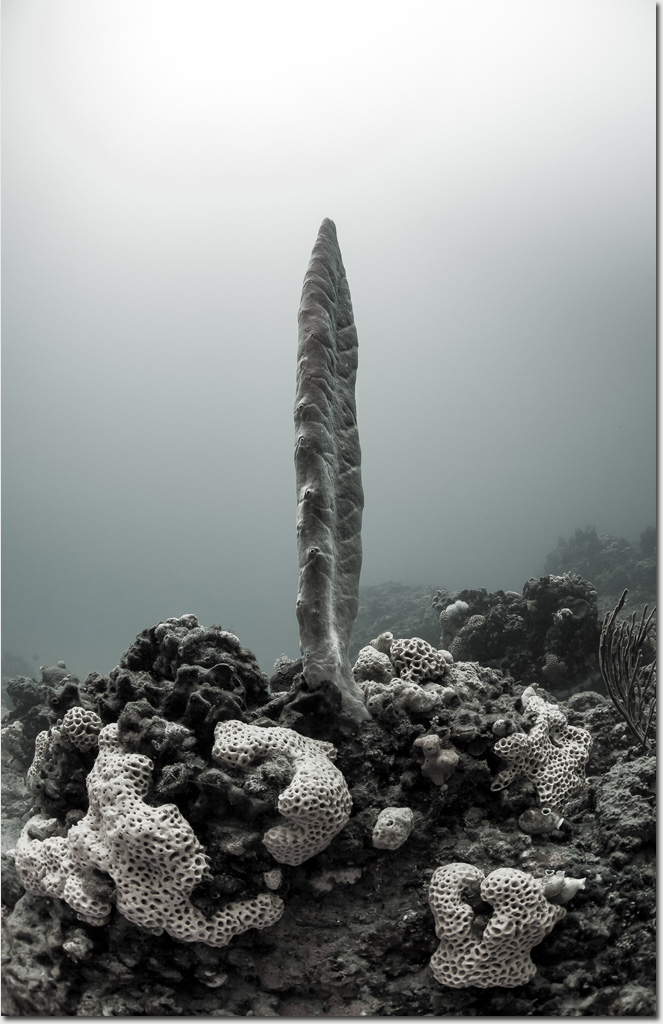
This amazing sponge has been a deep water landmark for me since the first time I cam across it more than 4 years ago.
We really do get some big sponges here in South Australia and have some incredible sponge gardens which leave anything tropical in their salty wake.
What we have is cold to temperate nutrient rich water, strong tidal currents and with some of the very deep water through Backstairs Passage we have diving here to rival anywhere for richness, colour, diversity and most importantly uniqueness.
This almost regal specimen is nearly a meter tall and even though it's not far (swimming distance) from Adelaide's most popular recreational dive site my guess it that not many will have ventured deep enough and far enough to find it.
I'm completely in the dark about sponges so perhaps it's about time I learned.
Photo: Robert Rath, ‘Day 698, Symbolic Sponge', 1/200 f/10 ISO320 15mm
Wednesday, November 27. 2013
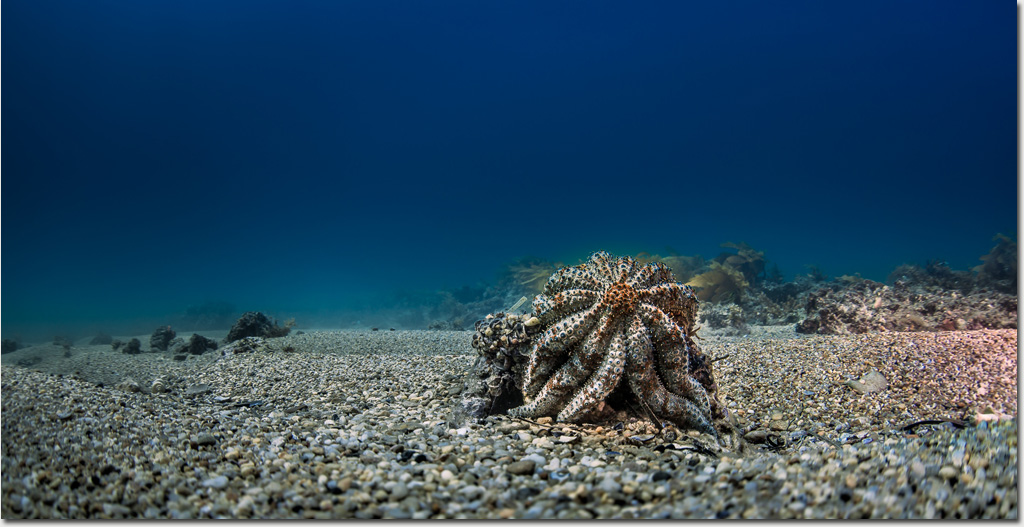
We all like to see symmetry in nature. Animals balanced from left to right are common place but most curious of all are animals structured as a prime numbers.
Whether we realise it or not prime number configurations are common in plants and we see them everyday so they just seem normal. Primes in the animal kingdom however just seem wrong and especially so when that number is eleven.
The eleven-armed sea star, Coscinasterias muricata, is our largest starfish and very common on most shallow reefs of southern Australia. It's our Oceans' Eleven!
This sea star is out to lunch, literally and is currently feeding on a group of commensurate fan worms in about 17m of water in the Port Noarlunga Gap
Photo: Robert Rath, ‘Day 697, Ocean's Eleven', 1/200 f/6.3 ISO160 15mm
Tuesday, November 26. 2013
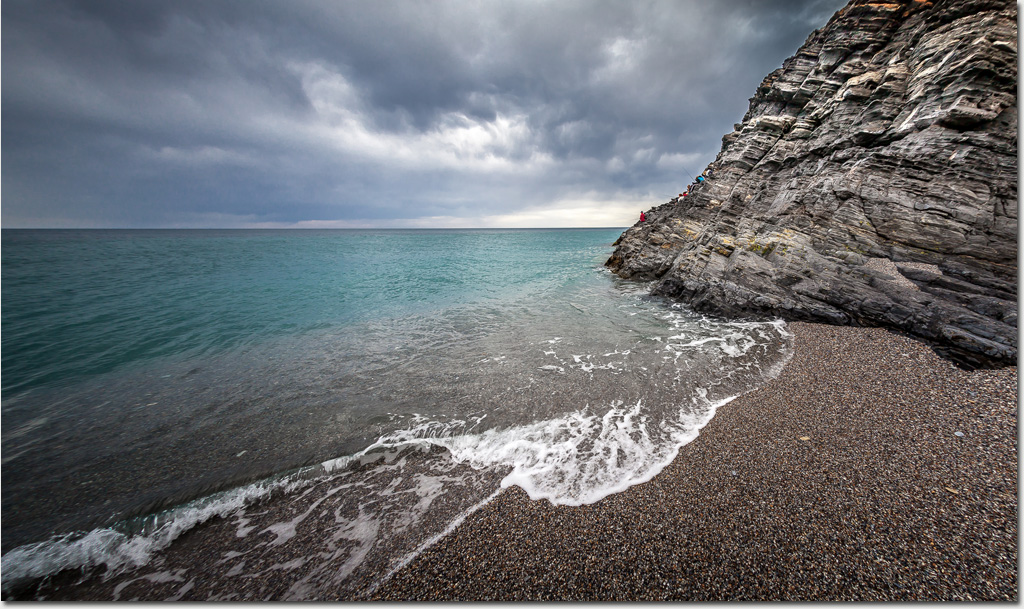
Rapid Bay is becoming a bit of a regular drawcord for me not just for the diving but for the land and seascapes as well.
Here at the eastern end, fishers perch precariously on the rocks while a gentle sea laps on the shingled beach.
It's great to have a moody sky again after the recent wall-to-wall blue skies.
Photo: Robert Rath, ‘Day 696, Precariously Perched', 1/320 f/7.1 ISO160 15mm
Monday, November 25. 2013

The Adelaide City Council's 'Free Wall' project and this space under the Morphett Street Bridge is a place I come back to photograph over and over.
There is always something different and you never know who you might meet.
Photo: Robert Rath, ‘Day 695, The Wall', 2.5s f/8 ISO100 40mm PanoX3
Sunday, November 24. 2013
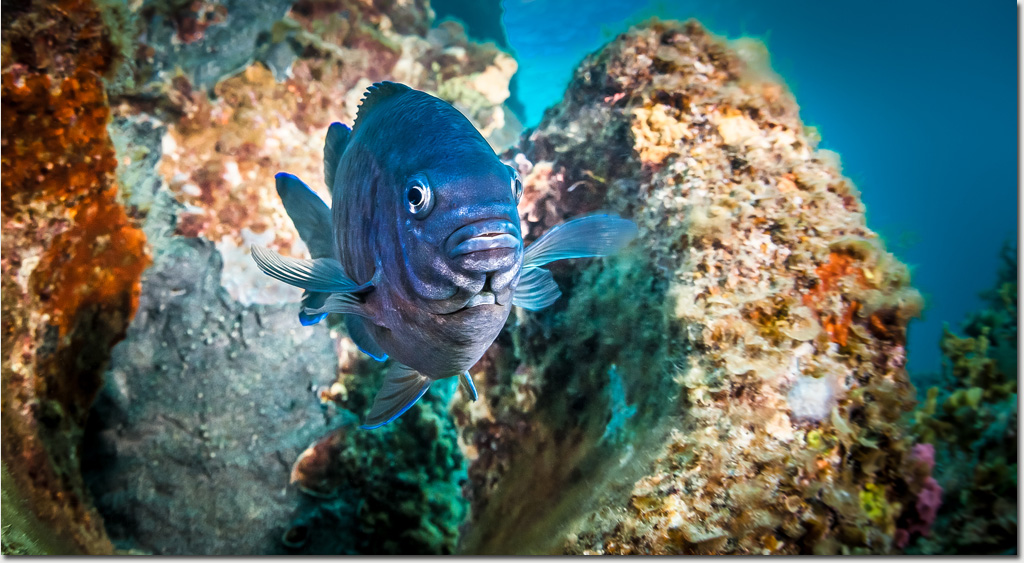
How do you know you have entered the personal space of a Victorian Scalyfin ( Parma victoriae)? Easy, because he comes out and starts headbutting your camera!
On the plus side is that you get plenty of photo opportunities before pretending to be chased away.
Photo: Robert Rath, ‘Day 694, Bossy Scalyfin', 1/60s f/22 ISO800 15mm
|

































